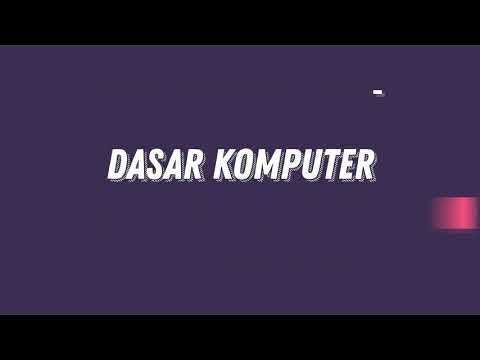How to Write a Formal Email | Digital Literacy | Twinkl USA
Summary
TLDRThis video provides a step-by-step guide on how to write a formal email, a crucial skill for communicating with teachers, principals, and others in professional settings. It covers key elements like crafting an effective subject line, choosing the right greeting, writing a clear and polite message, closing the email with respect, and reviewing before sending. With practical examples and helpful tips, viewers will learn to write professional, courteous emails that make a great impression, whether for school or work-related requests.
Takeaways
- 😀 Choose a clear, concise subject line to summarize the content of your email.
- 😀 The subject line should inform the reader about the purpose of the email (e.g., homework question, permission request).
- 😀 Start your email with an appropriate greeting to set the tone for the message.
- 😀 Use 'Hello' for a friendly tone when you know the person; 'Dear' for a more formal and respectful approach.
- 😀 'Dear Sir or Madame' is ideal when you don’t know the recipient’s name (e.g., emailing a company or organization).
- 😀 In the body of the email, clearly explain the purpose of your message and what you are asking for.
- 😀 Always be polite and to the point in the email’s body to ensure clarity and professionalism.
- 😀 End the email with a courteous closing phrase, such as 'Sincerely' or 'Thank you'.
- 😀 Include your name after the closing phrase to properly sign off the email.
- 😀 Review your email before sending to check for spelling errors and ensure the message is clear and complete.
- 😀 Use a checklist to ensure the subject line, greeting, body, closing, and signature are correct and polite.
Q & A
Why is writing a formal email an important skill to learn?
-Writing a formal email is important because it helps you communicate clearly, politely, and professionally, especially when reaching out to teachers, principals, or individuals you don't know well.
What is the purpose of the subject line in a formal email?
-The subject line serves as a brief introduction to the content of the email, helping the reader understand the main topic at a glance. It should be concise and relevant.
What are some examples of appropriate subject lines for formal emails?
-Examples of appropriate subject lines include 'Homework Assignment Question,' 'Permission Request for Field Trip,' or 'Inquiry Regarding School Event.'
What greeting should you use in a formal email when you know the recipient?
-When you know the recipient, 'Hello' is a simple and friendly greeting that works well.
How should you address a recipient in a formal email if you don't know their name?
-If you don't know the recipient's name, 'Dear Sir or Madame' is a formal and respectful greeting you can use.
What is the best way to write the body of a formal email?
-In the body of the email, be clear and direct. Start by explaining the reason for your message and make your request or inquiry politely, ensuring your point is easy to understand.
What is a formal way to close a formal email?
-'Sincerely' is a formal and respectful way to close an email, followed by your full name.
How can you ensure that your email is polite and professional?
-To ensure politeness and professionalism, use formal greetings and closings, be clear in your message, and avoid informal language. Double-check for spelling and grammatical errors as well.
What should you check before sending a formal email?
-Before sending, review the subject line, greeting, clarity of the message, and closing. Also, check for spelling mistakes and ensure you’ve included all necessary information.
What can help you make a good impression when sending formal emails?
-Using the proper format, clear and polite language, and proper review of the email for errors can help you make a great impression when sending formal emails.
Outlines

Esta sección está disponible solo para usuarios con suscripción. Por favor, mejora tu plan para acceder a esta parte.
Mejorar ahoraMindmap

Esta sección está disponible solo para usuarios con suscripción. Por favor, mejora tu plan para acceder a esta parte.
Mejorar ahoraKeywords

Esta sección está disponible solo para usuarios con suscripción. Por favor, mejora tu plan para acceder a esta parte.
Mejorar ahoraHighlights

Esta sección está disponible solo para usuarios con suscripción. Por favor, mejora tu plan para acceder a esta parte.
Mejorar ahoraTranscripts

Esta sección está disponible solo para usuarios con suscripción. Por favor, mejora tu plan para acceder a esta parte.
Mejorar ahoraVer Más Videos Relacionados

Email Etiquette for Middle and High School Students

MUDAH BANGET ! CARA MEMBUAT MAKALAH DENGAN BAIK DAN CEPAT

Pembahasan Soal OTKP ( Menulis dalam bahasa Inggris pada tingkat Operasional Dasar )

How to write an Email in English: FORMAL & INFORMAL - Real Life English Conversation

How to write a letter of Motivation to win a Scholarship | award winning tips

The Formal Email - Everything you need to know!
5.0 / 5 (0 votes)
